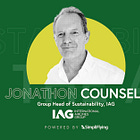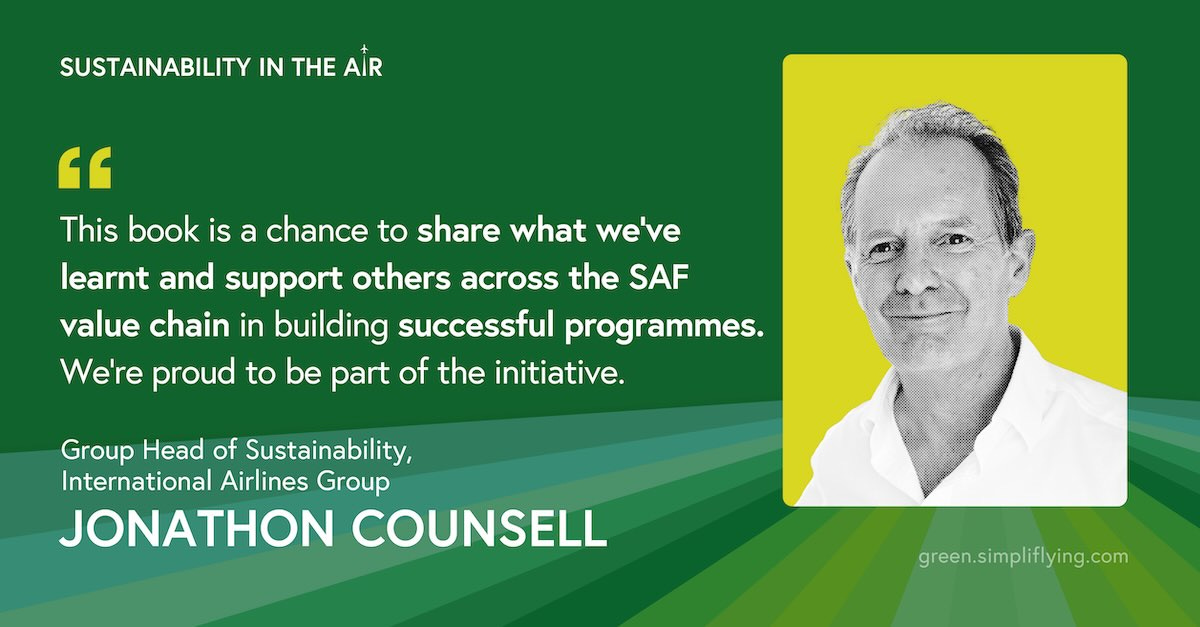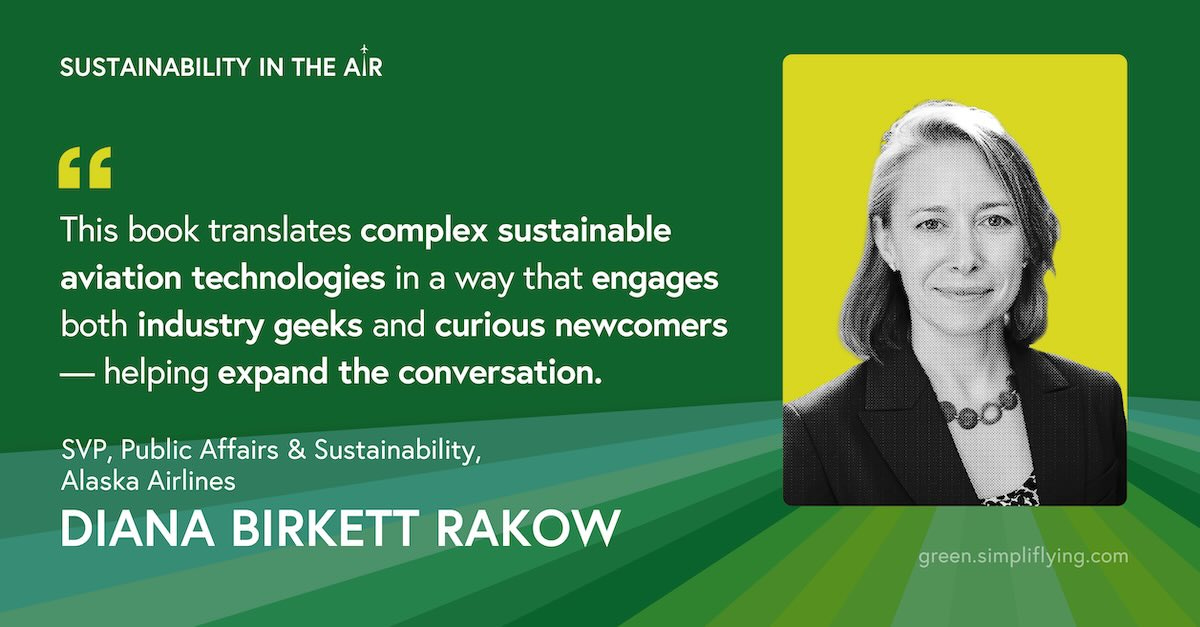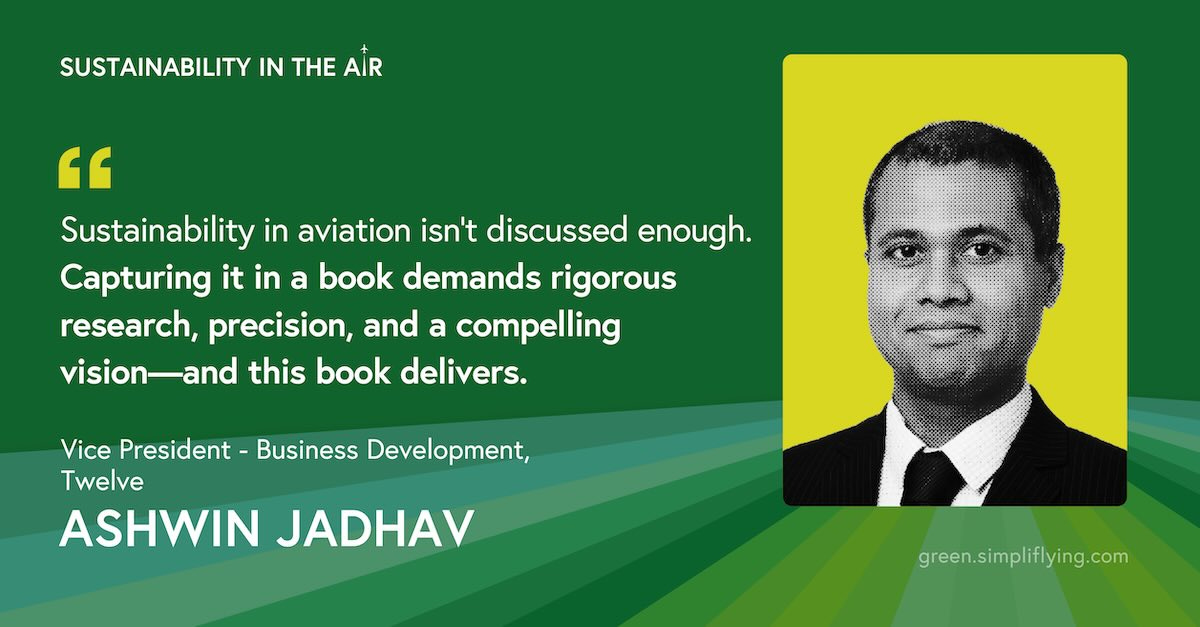In this special episode, SimpliFlying’s CEO Shashank Nigam and Head of Sustainability Dirk Singer sit down with senior leaders from three companies featured in their upcoming book, Sustainability in the Air, Volume Two.
Joining the conversation are Jonathon Counsell (Group Head of Sustainability, IAG), Diana Birkett Rakow (SVP of Public Affairs and Sustainability, Alaska Airlines), and Ashwin Jadhav (VP of Business Development, Twelve). All of them are featured in the new book. Together, they explore how their organisations are addressing aviation’s toughest sustainability challenges — and where the industry is headed next.
Here are the key highlights of the conversation:
Why a second volume so soon? (1:55)
IAG’s leadership in SAF adoption (5:08)
Adapting sustainability strategy in the current climate (6:58)
The importance of corporate partnerships: Microsoft, Alaska & Twelve (11:01)
The economics of 14-Year SAF offtake agreement (15:07)
Alaska Airlines’ investment strategy and five-part path to net zero (24:37)
The future of hydrogen in aviation (38:46)
The path to net zero: challenges and optimism (47:06)
Keep reading for a detailed overview of the episode.
The evolving landscape of sustainable aviation
Sustainability in the Air, Vol. Two follows its predecessor after only 18 months – a reflection of how rapidly the sustainable aviation landscape is evolving. As Singer explains during the discussion, this quick succession is justified by the significant shift in industry focus:
“Over the past 18 months, the sustainable aviation landscape has evolved rapidly. We’re seeing the industry mature, with companies now expected to prove the commercial value of their solutions. It’s no longer enough to rely on the green premium—you have to demonstrate a clear business case.”
Singer notes that the sustainable aviation sector has moved beyond relying solely on “green premiums” and is now focused on developing tangible business value. This maturation reflects both market realities and the growing understanding that sustainable solutions must demonstrate clear commercial benefits to ensure widespread adoption.
Long-term commitments enabling investment
One of the most notable developments highlighted in the conversation was IAG’s (International Airlines Group) rise as a major consumer of sustainable aviation fuel (SAF). In 2024, the airline group used 162,000 tons of SAF — 1.9% of their total fuel consumption — marking a significant jump from just over 50,000 tons in 2023, shares Counsell.
Particularly significant is IAG’s 14-year offtake agreement with carbon transformation company Twelve, that produces SAF from air-captured carbon dioxide. The significance of this agreement cannot be overstated, especially in an industry where one-year contracts are the norm. As Counsell points out, “Bankability is absolutely key, and I think this is the primary role that airlines should be playing in helping to establish a SAF market. It’s doing these long-term, committed contracts.”
From the supplier’s perspective, these extended agreements are vital for securing necessary investment. As Jadhav explains: “As a producer, we have to navigate strict financing requirements. Many lenders demand a bankable offtake agreement before providing funding. A long-term, bankable offtake holds significant value, unlocking much of the market's potential. In the end, we’re essentially competing for investment dollars.”
Direct investment in technological development
Alaska Airlines has taken a proactive approach to sustainable aviation by investing directly in emerging technologies and companies through its corporate venture capital arm, Alaska Star Ventures.
Rakow outlined how this strategy evolved from their net zero pathway established in 2021, which comprises a comprehensive five-part path that prioritises operational efficiency, fleet renewal, SAF, new technologies, and carbon credits as needed.
“We realised that the net zero pathway relies on technologies that may not yet exist — at least not at the scale required to meet our targets. So the question became: what’s our role in enabling those technologies?”, shares Rakow.
This assessment led to the creation of Alaska Star Ventures, which has invested in two companies featured in the new book: Twelve and JetZero. While Rakow acknowledges that Alaska’s “cheque sizes aren’t large,” their investments offer strategic value — opening doors to partnerships and giving the airline a front-row seat to emerging technological developments.
Regulatory frameworks and infrastructure challenges
The conversation also addressed how regulatory environments are supporting or hindering sustainability efforts. Both Counsell and Rakow emphasise that while mandates create demand, they must be accompanied by supporting policies to attract investment for infrastructure development.
“In the EU, they’ve introduced SAF allowances and are exploring funding for first-of-a-kind plants. In the UK, we’re working on a revenue certainty mechanism. These are crucial complements to mandates—they help attract the investment needed to actually build SAF facilities,” notes Counsell.
Rakow specifically highlighted that permitting reform and infrastructure support remain critical needs in the United States: “What we really need is permitting reform and infrastructure support—to break ground effectively, get projects built, and create new jobs.”
The path to net zero
On the fundamental question of whether aviation can hit its net zero targets, the conversation carried a tone of cautious optimism. “I think globally, by 2030, we could hit the 5% [SAF] target—the ICAO ambition—which would mean producing around 20 million tons of SAF,” notes Counsell.
But he quickly underscores the scale of the challenge: “We need to work hard to secure additional policy support, because it takes hundreds of billions of dollars in investment to get these plants built.”
Join the conversation
Sustainability in the Air, Vol. Two is available for purchase on Amazon. The authors are scheduled to attend a number of industry events across Amsterdam, London, Farnborough, Pittsburgh, Seattle, and Dubai.
‘Sustainability in the Air’ is the world’s leading podcast dedicated to sustainable aviation. Through in-depth conversations with top aviation leaders, we break through the clutter and provide a clear roadmap for a net-zero future.


















